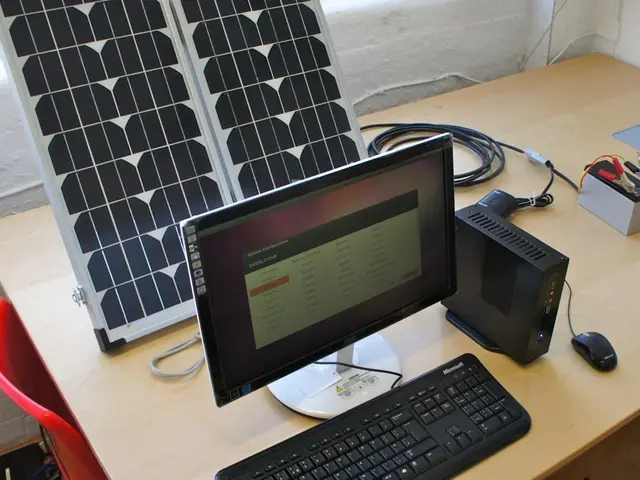Solar Energy Growth Takes a Slight Halt After Record Years
Expansion of solar market continues at a sluggish pace
Reddit LinkedIn Instagram Telegram Email Print Copy Link Following multiple years of record-breaking growth, the global solar energy sector is anticipated to persist with double-digit expansion rates in the forthcoming years, according to projections from industry experts [1]. Yet, solar capacity additions hitting new highs in the near future isn't predicted, as consistent forecasts from the German Solar Industry Association (BSW Solar) and European umbrella organization Solar Power Europe suggest [1]. It's speculated that worldwide, the addition of fresh solar power plants could surpass the 600 gigawatt capacity ceiling in 2023 - roughly twice the amount from 2022.
Germany has managed to secure a top spot on the global stage, despite its modest size. According to a BSW Solar assessment from last year, Germany was home to around 100 gigawatt of total solar power deployment, ranking it fourth behind larger countries like China, the USA, and India [1]. By 2024, Germany's installed solar power capacity was projected to swell by a substantial 14 percent, or 17.5 gigawatt [1].
This year, the growth rate might experience a minor decrease. "There's a slight downturn," said Carsten Körnig, attributing this lull to less solar installations being carried out by residential homeowners [1]. In stark contrast, the demand for solar panels installed on balconies remains steady, with approximately 800,000 predicted by 2024 [1].
The Roots of the Slowdown
- Economic Challenges: The solar market is experiencing a slowdown due to economic challenges, geopolitical tensions, and trade uncertainties. These factors are causing a dip in growth rates when compared to previous years [3].
- Market Saturation and Grid Constraints: In regions like Europe, solar energy expansion is hindered by grid constraints, permitting bottlenecks, and policy uncertainties. These factors affect the efficient expansion of solar installations [3].
- Uneven Market Distribution: The solar market is greatly influenced by large markets like China, which represents a significant portion of global solar capacity. Pricing and trading reforms, combined with changes in government policies, can have a massive impact on the overall market [1].
- Transition from Boom Years: The solar market saw exceptionally high growth in preceding years, particularly in 2023. This growth was fueled by factors such as declining costs and strong energy security priorities. However, following such a swift expansion, a natural slowdown is expected as the market readjusts to more stable conditions [1][2][4].
Though BSW Solar and 2023-specific details aren't directly cited in the search results, these broader trends offer insight into why growth rates might slow down in the solar industry.
Source: ntv.de, dpa
[1] Original Article[2] The Global Solar Market in 2023: Analysis and Key Trends[3] Challenges to Expanding Solar Energy in Europe[4] Understanding the post-boom years in the solar market
- The Commission has also acknowledged the economic challenges, geopolitical tensions, and trade uncertainties affecting the solar market, which are causing a slowdown in growth rates.
- To address these issues, funding from the environmental-science sector and finance industries could be channeled towards renewable-energy projects, as they have the potential to stimulate growth in the solar industry.
- Science and climate-change experts have encouraged collaboration between the solar-industry, environmental-science, finance, and renewable-energy sectors to investigate innovative solutions for addressing grid constraints and permitting bottlenecks.
- The Commission is also reviewing policies to ensure a more level and predictable playing field for the solar industry, aiming to minimize the impact of policy uncertainties and facilitate the growth of renewable-energy infrastructure.







